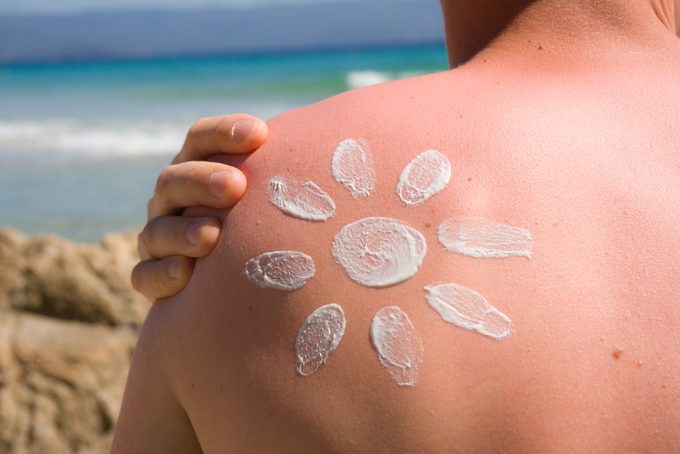Natural Ways to Relieve a Sunburn
We asked two experts for their advice on managing a sunburn .

The homeopath says…
I recommend applying Urtica urens cream, which is made from an herb commonly known as annual nettle and unsurpassed in treating sunburn. This homeopathic first aid remedy relieves discomfort and pain while speeding up healing time. Urtica urens also comes as a spray, a tincture and homeopathic pellets that are taken under the tongue. If you’re using a cream or spray formula, apply it topically to affected areas as needed, up to four times daily. If you’re ingesting pellets, take two pellets (in 6C or 30C doses, as recommended by a practitioner) three or four times daily as soon as you notice the sunburn and continue for three or four days until there’s a noticeable improvement.
Herbal calendula, which comes from the Mediterranean calendula flower, is also a great way to treat sunburn. You can find calendula cream in most health food stores (I really like Weleda, Thompson’s and St. Francis Herb Farm brands). Calendula cream contains antibacterial and immunostimulant properties to heal and disinfect. I also recommend calendula for sunburn because it stimulates the skin’s production of collagen and prevents scarring.
Sonya McLeod is a homeopath based in Vancouver.
The dermatologist says…
A sunburn is your skin’s reaction to UV rays that deeply penetrate and damage skin cells. In the short term, a sunburn can cause inflammation of the skin, tenderness, redness and even blistering in extreme cases. The long-term effects of sunburn and overexposure to UV rays can include skin discoloration, such as hyperpigmentation, wrinkling and skin cancer. The symptoms of a sunburn are temporary, but the resulting damage is permanent.
Signs of a sunburn may not appear for three or four hours and peak at 24 hours, but it may be up to 48 hours before all of the symptoms manifest. Symptoms of a sunburn can include redness and a burning sensation. Severe sunburns can cause headaches, nausea, fever and chills, as well as redness and a burning sensation. Ibuprofen may help reduce these symptoms, as well as any swelling.
Treat the skin immediately by taking a cool bath or applying a cold compress to the affected area to soothe red-hot skin. Be sure to drink plenty of water to rehydrate your body. Apply a mild, unscented moisturizer, such as Glaxal Base (my go-to), to soothe irritation and help minimize peeling. Once the sunburn has healed completely, apply a topical retinoid cream to regulate skin cell turnover and help get rid of damaged cells. SkinMedica has a great line of products that can help.
Dr. Jillian Macdonald is a dermatologist certified with the Royal College of Physicians and Surgeons of Canada and based in Ottawa.
Related:
• Do You Know What Skin Cancer Looks Like?
• The 10 Best Products to Soothe a Sunburn
• 20 Things Your Skin Says About Your Health




